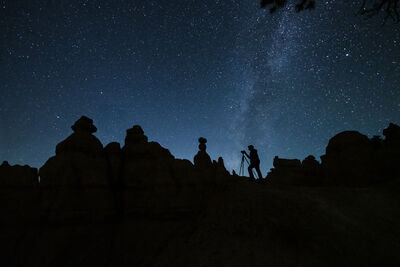The Outer Limits Galaxy
Sep 30, 2023 00:46:54 #
Ballard
Loc: Grass Valley, California
Retired CPO wrote:
Thanks very much, Ballard. I'll check out the video!
You are quite welcome. If you have any questions feel free to ask.
Sep 30, 2023 01:17:19 #
Ballard wrote:
You are quite welcome. If you have any questions feel free to ask.
Will do, thank you!!

Sep 30, 2023 02:38:27 #
Sep 30, 2023 06:37:18 #
Sep 30, 2023 07:21:47 #
Sep 30, 2023 07:28:51 #
Sep 30, 2023 07:40:53 #
Ballard wrote:
The images below are of NGC 891 nicknamed the Oute... (show quote)
Wow! That’s amazing! Thanks for sharing the technique you used.
Sep 30, 2023 08:31:59 #
JR69
Loc: Wolverine Michigan
Ballard wrote:
The images below are of NGC 891 nicknamed the Oute... (show quote)
Ballard
To be honest I did not understand much of your explanation of the images. However they are IMPRESSIVE !!~
Sep 30, 2023 11:20:13 #
Ballard wrote:
The images below are of NGC 891 nicknamed the Oute... (show quote)
Ballard, those two images are just beautiful. You are so skilled and patient at capturing and processing such images. NGC891 looks like a UFO. I guess all similar spiral galaxies do. The most I have done with astrophotography minus the telescope or automated tracking is photographing a few comets with just a (film) camera. For Hale-Bopp I made a rig to manually track the comet from the Joshua Tree NP. I went out there twice and took images both after sunset and before sunrise weeks apart. Or and more recently I did with a photo class I was taking do a circular Star Trail photo. That was done with a digital camera and composite of many short exposures over the period of say 50 minutes. I should have gone to a few hours but there was a huge wind storm that night and I was afraid my tripod and camera might move. I had the tripod weighted down, but... As it was a friend's set-up did blow over and her Canon 5D was damaged. She later replaced it with a Canon 5D mk III.




Sep 30, 2023 12:49:09 #
Ballard
Loc: Grass Valley, California
Fly cessna wrote:
I remember looking at the milky way in the summer evenings in Colfax
Yep you can still see the summer milky way from Grass Valley also. However the sky brightness has slowly been increasing over the years.
Sep 30, 2023 12:52:13 #
Ballard
Loc: Grass Valley, California
ELNikkor wrote:
Excellent photos! (Wonder if "they" have similar photos of our galaxy? : )
Hi ELNikkor
Thanks for checking out the photos of "The Outer Limits" Galaxy and for the comment. I wouldn't be surprised if someone there has taken pictures of our galaxy. Of course their images would be what our galaxy looked like almost 30 million years ago.
Sep 30, 2023 12:53:03 #
Ballard
Loc: Grass Valley, California
raymondh wrote:

Hi raymondh
Thanks for viewing the photos of NGC 891 and for the Thumbs up.
Sep 30, 2023 12:53:42 #
Ballard
Loc: Grass Valley, California
nimbushopper wrote:
Well done!
Hi nimbushopper
Thanks for checking out the shots of NGC 891 and for the comment.
Sep 30, 2023 12:59:26 #
Ballard
Loc: Grass Valley, California
Kevin.M wrote:
Wow! That’s amazing! Thanks for sharing the technique you used.
Hi Kevin.M
Thank you for viewing the images of NGC 891 and for the comment. I mentioned to Retired CPO that I gave a talk to my astronomy club on using a monochromatic camera for astrophotography and that talk was put onto youtube.
If you are interested that video can be seen at.
https://www.youtube.com/watch?v=Q3dQhwbVjEQ
Sep 30, 2023 13:08:38 #
Ballard
Loc: Grass Valley, California
JR69 wrote:
Ballard
To be honest I did not understand much of your explanation of the images. However they are IMPRESSIVE !!~
To be honest I did not understand much of your explanation of the images. However they are IMPRESSIVE !!~
Hi JR69
Thanks for viewing the images of NGC 891 and for the comment. If you have any questions that I can clarify feel free to ask. Recently I gave a talk to my astronomy club on using a monochromatic camera and it was later put onto youtube. If you are interested it can be seen at
https://www.youtube.com/watch?v=Q3dQhwbVjEQ
If you want to reply, then register here. Registration is free and your account is created instantly, so you can post right away.





